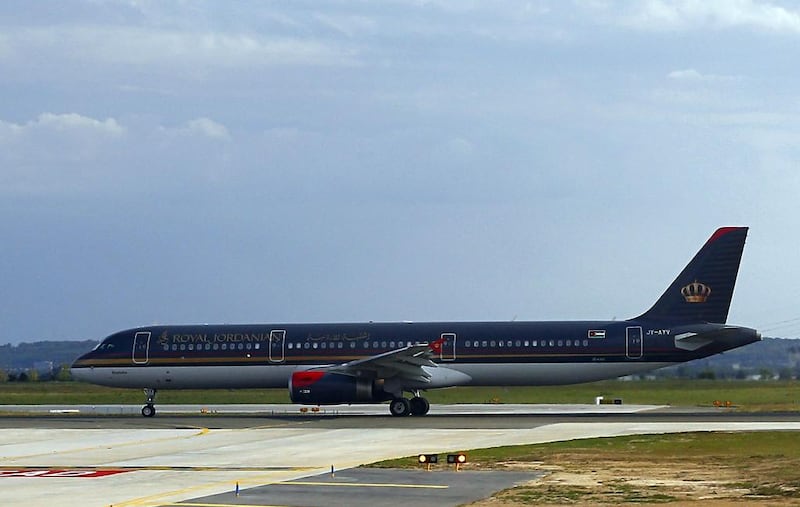Royal Jordanian Airlines, the kingdom's national carrier, is in talks with plane manufacturers to add as many as 23 narrow-body aircraft to its fleet as the company looks to retire older planes and press on with a five-year turnaround strategy, its chief executive said.
"We are now in the process of a fleet rollover in the short-haul… we are in negotiations with all the four suppliers Boeing, Airbus, Embraer and Bombardier in order to get the best offer for us to renew the fleet," Stefan Pichler said in an interview with The National. "We will make a decision on which supplier to go with by the end of September this year."
The carrier plans to purchase four aircraft and lease the remaining two-thirds, which will be replacements for the airline's current fleet of 19 short-haul planes, Mr Picher said. The carrier also has seven long-haul craft.
The Amman-listed airline, which is 85 per cent government owned, embarked on a five-year turnaround strategy last year to shrink years of accumulated losses, repair the balance sheet and return to the capital market (start issuing equity to investors again), by 2021. The plan includes adding destinations and growing the fleet, adding capacity to existing routes, launching fare promotions and expanding the activities of loyalty programmes.
The turnaround is intended to enhance unit revenues by 7 per cent and lower unit costs by 5 per cent. The carrier is eyeing expansion in Europe, the US and the Levant – not the GCC and Asia, Mr Pichler said.
The former chief executive of the now-defunct European carrier Air Berlin, appointed last year to restore Royal Jordanian to growth, said positive results are already beginning to show.
The carrier narrowed its first quarter loss to 13.8 million Jordanian dinars from a loss of 26.3m dinars in the same period in 2017. Revenues increased 13.4 per cent in the first three months of the year to 143m dinars.
“It was a very good start to 2018 and we are pretty confident we will continue this strong performance for the rest of the year,” Mr Pichler said. “If we keep up this momentum we should see a significant increase," in net profit for 2018.
_______________
Read more:
[ Air Arabia first quarter profit rises on strong demand, lower cost margins ]
[ Emirates full-year profit surges 124% as revenue and capacity climb ]
[ Exclusive: Oman considers IPO of airports company by 2020 amid privatisation drive ]
_______________
The carrier also witnessed 7 per cent year-on-year growth in passenger numbers over the quarter, leading to a seat load factor of 73.4 per cent, up from 68.8 per cent in the year-earlier period. Royal Jordanian ended 2017 with a net profit of JD468,000 – “small” but significant after the airline reported a loss of JD26.3m in the first half of 2017, Mr Pichler said.
“We had a very strong second third and fourth quarter of 2017, which means we were able to enhance our load factor in the second half of the year by nearly 8 percentage points, which brought us more revenue, and we also made good progress on yields.”
The company achieved around JD11m of cost savings over the year from cutting capacity and making operational savings. “This altogether enabled us to report a small net profit for 2017,” Mr Pichler said.
Royal Jordanian cancelled an order for its seventh Boeing 787-8 in February “to trim excess capacity”, and plans to focus on growing a single aisle narrow-body fleet instead to support short-haul expansion. The airline has 25 planes in operation at present - 14 Airbus A320-family jets and five Embraer SA regional aircraft. “Rolling over the fleet” will take 5-6 years in total,” Mr Pichler said.
Meanwhile, the airline will start flying to Copenhagen in Denmark on June 2, it re-launched flights to Erbil and Sulaymaniyeh in Iraq in March, and it will launch services to Washington, D.C., from next spring, its seventh city in the US.
“Our plan is not driven by market share but by bottom line performance and sustainable profit growth,” Mr Pichler said.






